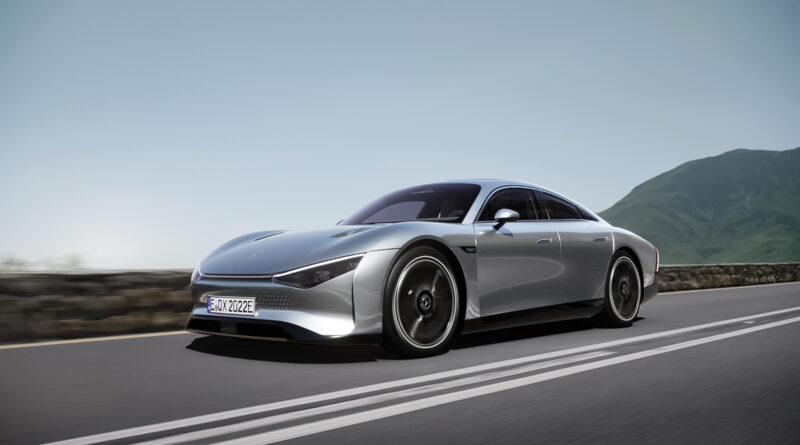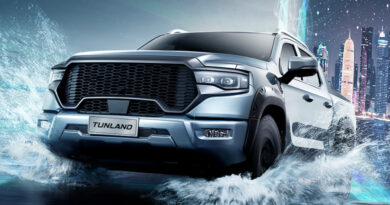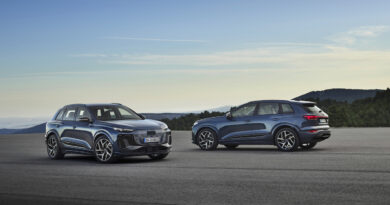Mercedes-Benz EQXX 1000km concept showcases advanced EV tech and software
Mercedes-Benz has reimagined the electric car with its Vision EQXX concept that is a technology showcase with an emphasis on efficiency – and a car the company claims is “ripping up the automotive engineering rule book”.
The sleek and stylish compact sedan promises upwards of 1000 real-world kilometres of range from its 100kWh battery, making it one of the most efficient EVs ever conceived.
With engineering input from the world’s oldest car maker and some of the world’s most talented engineers – including those involved in Formula 1 – the EQXX has an intense focus on aerodynamics, sustainability, battery cooling and software.
The EQXX is a one-off concept car for now, and while no plans have been announced to produce the sleek aerodynamic four-door, Mercedes-Benz says “many of its features and developments are already being integrated into production”. Overseas reports also suggest it will form the basis of a production car slated for 2024.
READ MORE: Mercedes-AMG unveils V8-smashing EQS53 performance EV
As much as anything, the EQXX is a technological showcase that stamps the authority of the world’s oldest car maker on the fast-moving EV world. It is a physical template for future Mercedes-EQ electric cars.
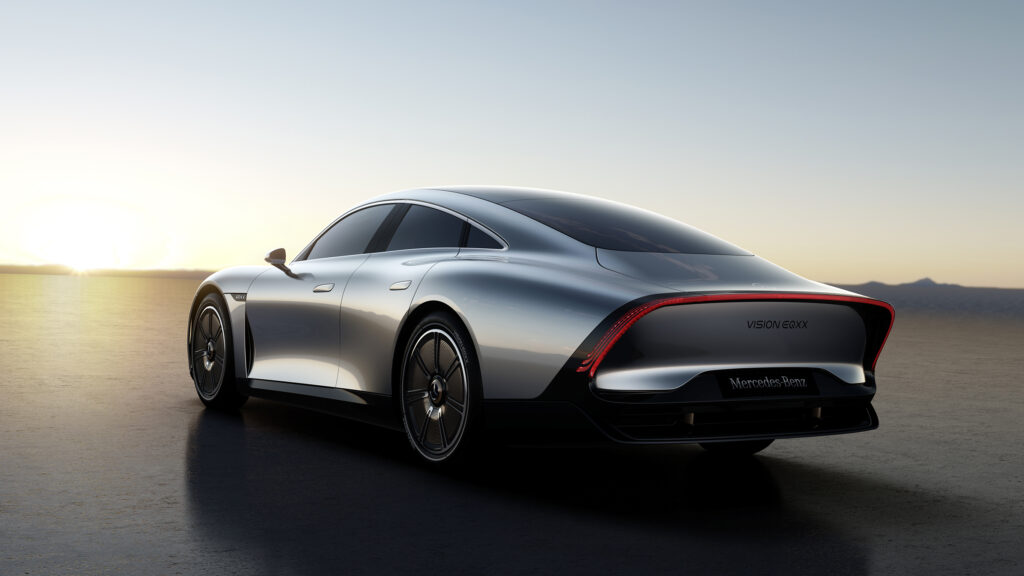
The EQXX amasses more than 100 years of engineering and design nous and packs it into a stunning show car designed to outpunch anything from Tesla and other EV start-ups that are increasingly stealing headlines.
Traditional car makers have been challenged by newcomers such as Tesla, which showed the world’s car makers how to make electric cars fun, appealing and exciting. The Vision EQXX is proof the world’s best won’t be sitting back.
EQXX all about desirability
“The Mercedes-Benz VISION EQXX is how we imagine the future of electric cars,” says Ola Källenius, Mercedes-Benz chairman.
“It underlines where our entire company is headed: We will build the world’s most desirable electric cars.”
That’s a crucial point. Mercedes-Benz doesn’t necessarily want to top the EV sales charts – stepping into a brewing battle between Volkswagen and Tesla, among others – but it wants to dominate with EV desirability.
Key to the EQXX’s engineering story is efficiency.
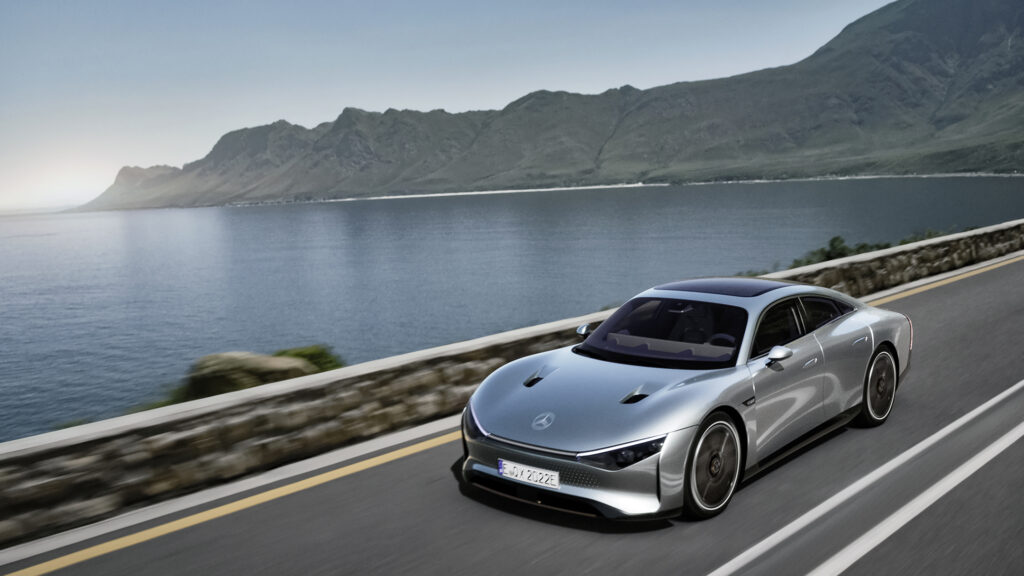
Estimated electricity use of less than 10kWh per 100km makes it one of the most efficient EVs – if it were to make it to production. Mercedes-Benz claims 95 percent of the electricity goes into moving the car.
To put that in perspective, the top-selling EV on the market and one of the most efficient electric cars, the Tesla Model 3, has claimed energy consumption of 13.2kWh per 100km.
The sub-10kWh/100km figure is around half that of many of the EVs currently on sale in Australia.
Advanced battery tech, controls
The battery and its associated systems are key to the EQXX efficiency story.
The 100kW unit (the usable capacity is slightly less than that) has a higher energy density than any battery used in a Mercedes-Benz electric car to date.
Along with the power control units the 100kWh battery weighs 495kg.
It is claimed to be half the size and 30 percent lighter than most EV batteries, and the “battery management system and power electronics have been designed with an absolute focus on reducing losses”, says Adam Allsopp, the advanced technology director from UK-based Mercedes-AMG High Performance Powertrains, which develops the highly-successful power units for the company’s Formula 1 cars.
Redesigned anodes using more silicon are a core part of the improved energy density of the battery.
The EQXX uses a 900V electrical system, more than double the 400V system used in most EVs and eclipsing the 800V systems used in the Porsche Taycan, Hyundai Ioniq 5 and upcoming Kia EV6 and Audi e-Tron GT.
READ MORE: EV charging race: Hyundai Ioniq 5 versus Porsche Taycan versus Audi e-Tron
The higher voltage potentially allows for faster DC charging, depending on the output of the charger and Mercedes-Benz says it is “currently assessing the potential benefits and implications for future series production”. It also allows for the use of thinner cables, which means less weight.
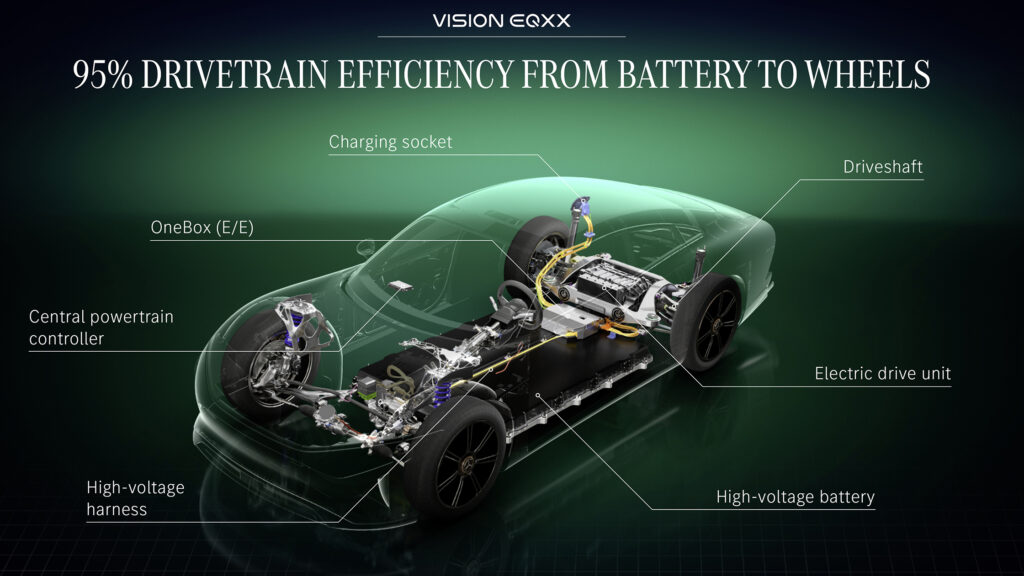
Mercedes-Benz says the EQXX – which uses doors made of fibreglass and carbon fibre and brake discs made of aluminium – weighs less than 1750kg, about the same as a Tesla Model 3.
The EQXX also uses an innovative battery cooling system that mostly relies on the air flowing around the car.
Mercedes-Benz says the EQXX also has “active cell balancing” to draw energy evenly from the cells, “in effect, giving it greater stamina”.
There are also 117 solar cells built into the roof, which on a sunny day can add 25km of EV range.
Those cells charge a separate lithion-iron phosphate battery – which typically don’t use cobalt – that powers the internal cooling fan, lights, infotainment system and various ancillaries.
Extreme aero efficiency for EQXX
The EQXX boasts a coefficient of drag of 0.17, which eclipses that of the Mercedes-Benz EQS (0.20) that is claimed to be the most aerodynamically efficient production car on the market.
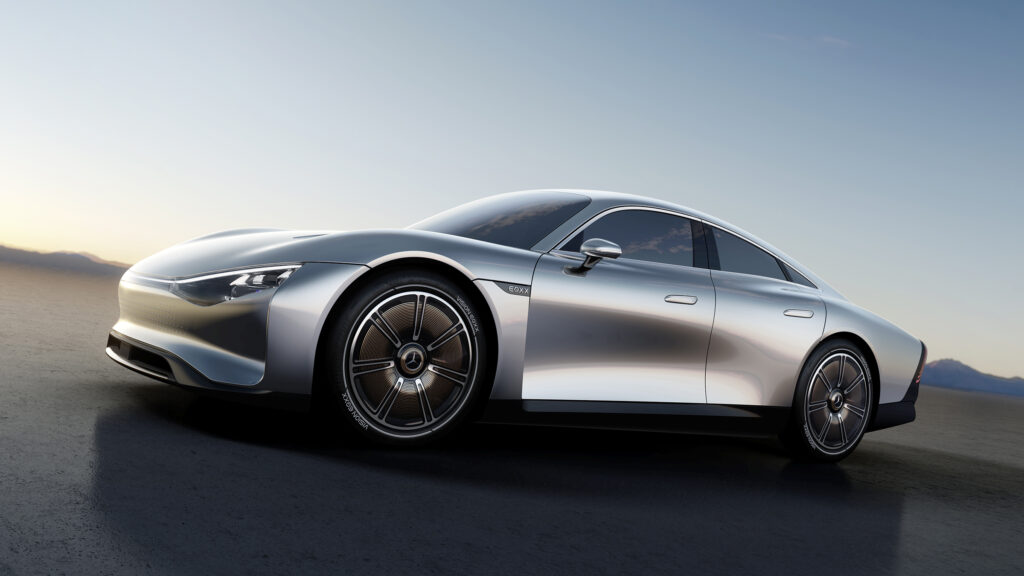
Mercedes-Benz says that aero efficiency ekes more range out of the EQXX.
The company says “a typical electric vehicle dedicates almost two-thirds of its battery capacity to cutting its way through the air ahead”, so any incremental improvements can have a big focus on EV range.
Active aerodynamics help achieve the sleekness through the air, with a retractable rear diffuser adding to its high speed efficiency.
Active shutters control the flow of air to the cooling system; they’ll mostly stay closed, potentially adding 20km to the range, but in hot weather or during more spirited driving can open to send more air to those systems that require cooling.
But the core design is also crucial. The rear wheels are 50mm closer together than those up front to create more of the teardrop shape that glides more easily through the air.
Wheel covers sit between the seven spokes of each magnesium wheel to further smooth the air flow.
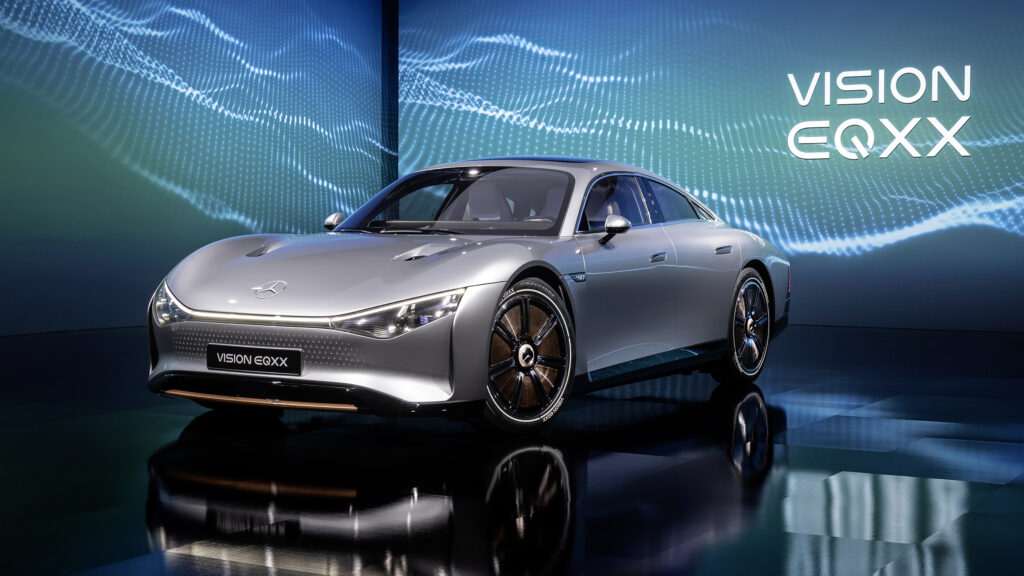
Mercedes-Benz designers also shortened the development time of the EQXX, something that will no doubt help with the future EV family.
Oddly for a company that has long focused on performance, there’s little detail of how fast the EQXX is. The specifications claims it has about 150kW of power from a single electric motor driving the rear wheels, which is modest by EV standards.
Changing EV world: From hardware to software
The EQXX also looks set to usher in a more software-focused era for Mercedes-Benz.
Whereas engines, bodies and sumptuous materials have long defined Mercedes-Benzes, the company is fast turn its attention to the software that can’t be seen – but can have an enormous impact on functionality and features.
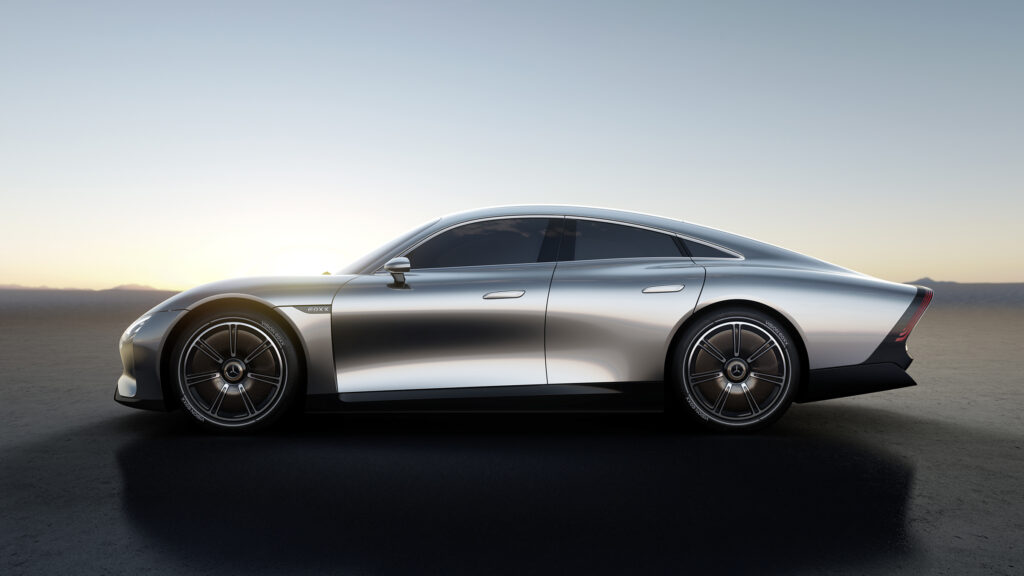
EV leader Tesla has been referred to as a software company as much as a car company, given its intense focus on the 1s and 0s (Tesla invented over-the-air software updates and has long been praised for its advanced software).
Now, it seems, Mercedes-Benz wants to step up its software focus, something it says will shorten development times and “revolutionises the way electric cars are designed”.
In revealing the EQXX Mercedes-Benz describes it as a “software-defined research prototype” and says it “has built a software-driven electric car that re-imagines the road trip for the electric era”.
“The technology programme behind the Vision EQXX will define and enable future Mercedes-Benz models and features,” says Markus Schäfer, Mercedes-Benz board member. “As a halo car, the Vision EQXX firmly establishes Mercedes-Benz as the brand that pairs luxury with technology in the automotive world and beyond.”
The software in the EQXX also touches the “Hey Mercedes” voice assistant, which is claimed to be faster and smarter than ever – something that will ultimately end up in production cars.
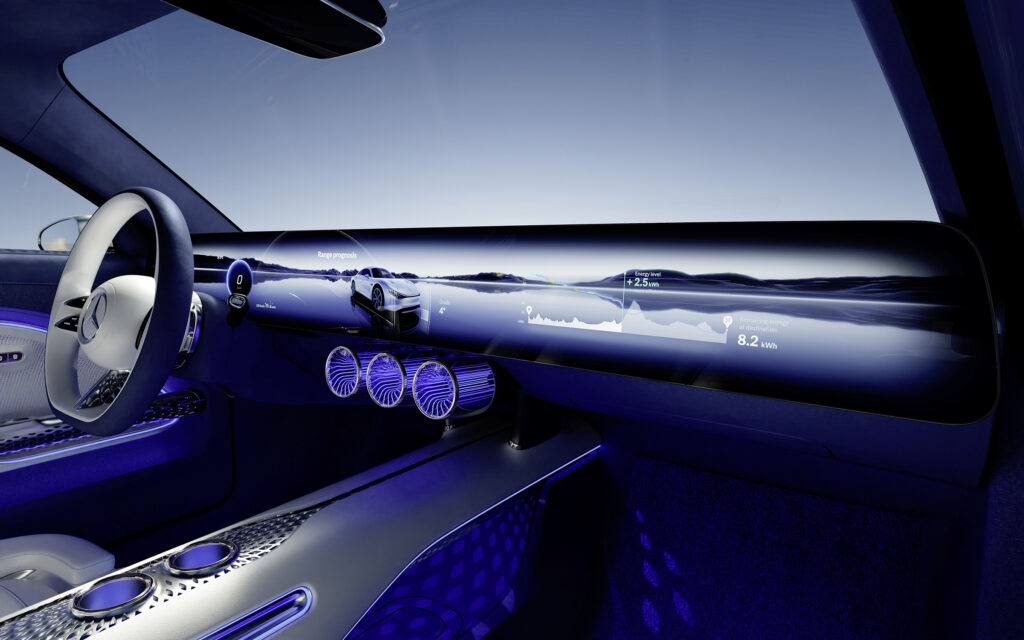
And even the screen that sprawls across the entire dashboard is said to have a focus on efficiency, with 3000 “local dimming zones, meaning it consumes power only as and when needed in specific parts of the screen”.
The sound system, too, uses fewer speakers but places them closer to the occupants’ heads, with the view to using less energy.
There are bass exciters in the seats, which can also be used for haptic feedback for the driver.
Vegan thinking for Mercedes-Benz EQXX
The EQXX does without that one material that has long defined Mercedes-Benz luxury: leather.
Instead, there’s an “animal-free leather alternative called Deserttex”, which is made from “cactus-based biomaterial”.
Another leather alternative used inside is Mylo, which is made from the roots of mushrooms.
It’s part of a push to ensure there are “absolutely no animal-derived products” in the EQXX.
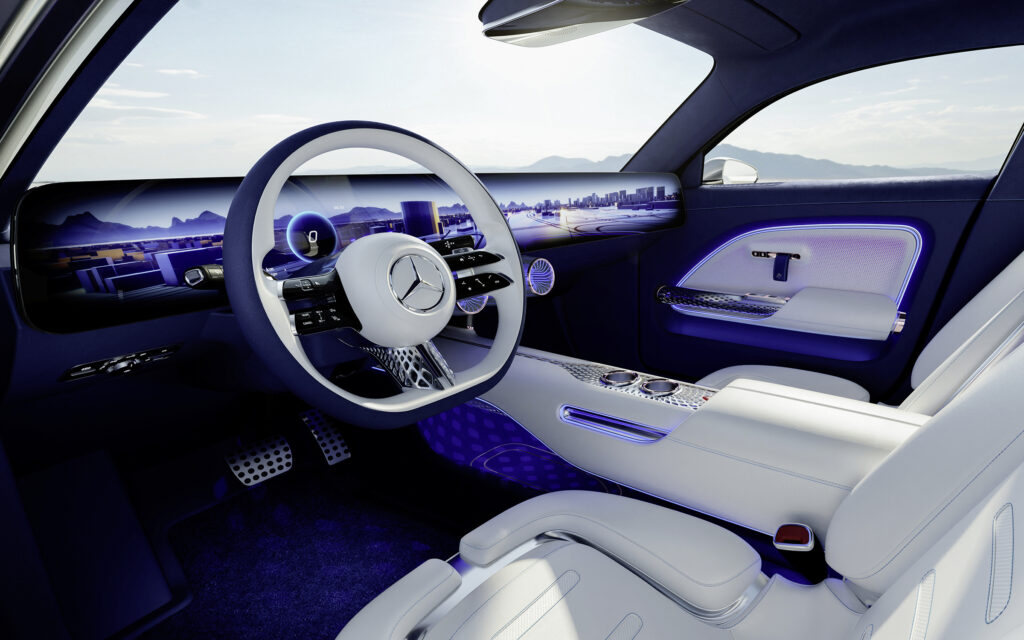
Interior door pulls are made “vegan silk” called AMsilk’s Biosteel fibre and the carpets are manufactured wholly from bamboo fibre.
Plastics are made from recycled PET plasti bottles and UBQ, “a sustainable plastic substitute made from household and municipal landfill waste”.
All of which makes for a very different Mercedes-Benz than has ever come from the world’s oldest car maker.

